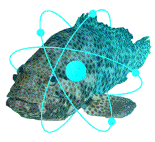NATURAL RADIOACTIVITY: Protection against Natural Ionizing Radiation
The course combines lectures, computer exercises, and measurement of indoor radon.
CONTENTS
A. NATURAL RADIATION
- A1 Introduction
- A2 Cosmic rays
- A3 Natural radioactivity
B. EXPOSITION TO COSMIC RAYS
- B1 factors affecting the dose
- B2 Exposition of air crews: regulation
C. EXTERNAL EXPOSITION TO NATURAL RADIONUCLIDES
- C1 Radioactivity of the soil and of building materials
- C2 Areas with high gactivity
- C3 Building materials with high radioactivity
- C4 Enhanced external exposition on workplaces
D. INTERNAL EXPOSITION TO NATURAL RADIONUCLIDES
- D1 Our unavoidable radioactivity
- D2 Enhanced internal exposition of workers
- D3 Radon
E ENHANCED EXPOSITION TO NATURAL RADIOACTIVITY DUE TO HUMAN ACTIVITIES
- E1 Regulation
- E2 Industries using naturally radioactive materials
- E3 Waste problems
F. INDOOR RADON
- F1 Introduction
- F2 Origin of radon
- F3 Radon production
- F4 Radon migration
- F5 Factors affecting the indoor pollution by radon
- F6 Radon progeny in air
- F7 Evaluation of the cancer risk
- F8 What is a dangerous radon concentration?
- F9 Indoor radon measurements
- F10 Measurement of radon progeny and PAEC
- F11 Prevention and mitigation
- F12 Justification of mitigation in an existing building
- F13 Justification of prevention in a new building
- F14 Exposition to radon in workplaces.
Different aspects are developed e.g. identification of natural source, effects on human health, measurement techniques and mitigation techniques. During the course, 8 hours of laboratory are scheduled. During this practical part, the participants realize physical measurements and use numerical codes to evaluate the dose of ionizing radiations received in practical cases.
Master and PhD students.
The course is a Seminar of the UPV Master on Industrial Safety and Environment, offered to CHERNE institutions as far as places are free.
20 hours / 1 week
The course combines lectures, computer exercises, and measurement of indoor radon.
Accommodation and meals: not organised
Travel andaccommodation: not covered.
No fee is foreseen.
However, a reduced fee (not higher than 50€) to cover organization expenses can be applied if the course is organized through CFP.
- Deadline for registration: 15 December 2018
- Communication of admittance: 15 January 2019
